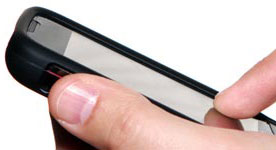
NPR was one of a few publishers to have a customized iPad application available at the product launch. The iPad app was a result of five weeks of intense development, but also, six months of learning through a successful app on the iPhone platform. Here are some things to consider when building applications and revenue models for either the iPhone or the iPad.
1. Apps give publishers an attractive new way to engage audiences. Benefits include:
Custom experiences. Publishers can use the capabilities of the iPhone and iPad to create compelling interfaces suited for touch navigation. And since the devices have standardized display and capabilities, designers can focus on creating one great experience.
Engaged audiences. Users seek out apps because of an affinity with the brand or content, and tend to be much more engaged than normal web users. At NPR, we’re finding engagement metrics in our app are many times higher than on NPR.org, as are clickthrough rates.
New advertising opportunities. The smaller screen forces new ad models, and gives publishers a chance to separate ads from content with smart use of interstitials. Through clever programming, publishers can finely control the ad models to ensure a good user experience and ads that perform well.
2. But there are some drawbacks and challenges. Among them:
Apps require lots of custom code. The iPhone and iPad platforms run on a specialized language, so most of your work will not easily be repurposed, even among different apps for the same platform. For example, NPR made the NPR News iPhone app, and assumed most of that code could be re-used to make a Music app, but that didn’t turn out to be true. A great app is designed around the content, and Music and News are different.
Development cycles are long. The tools used for testing iPad and iPhone apps are specialized, and there are novel new problems to solve. For example, does your app know how to orient the screen properly in landscape or portrait mode? How about when the device is lying flat on its back? Does the app provide a usable experience when it’s offline? These are not typical test cases for publishers used to web pages.
Proprietary platforms. While the tight controls Apple holds over the platforms help make them so effective, it also presents risk. If Apple drops support for a specific function or changes how something works with a platform update, you’re on your own to fix it. Likewise, Apple has final authority over accepting your app for distribution, and that process can take some time.
3. Some keys to success:
Early user testing. Even if it’s nothing more than sitting users down with mockups drawn on paper, you’ll learn a lot about how users expect to interact with your app – and your ads. Be sure to have a steady flow of user testing during and after development.
Agile prototyping. NPR worked with BottleRocket for both our iPhone and iPad apps. Their pencil-sketch prototyping method proved extremely useful during the early phases of development. Changes were simple and easy as different stakeholders weighed in.
The right ad platform. NPR chose Medialets to serve ads on both platforms. Medialets offers two big advantages: first, asynchronous ad serving. This means ads are cached on the device to ensure fast and smooth delivery, and also that they can be served offline with full accountability. And second, Medialets support rich media ads built in HTML5, with a variety of custom executions. They also are nimble enough to make changes or build to spec to provide us with the right ad experiences.
Editor’s Note: Bryan Moffett spoke at the US Leadership Forum on April 15. This post highlights some key points of his presentation.